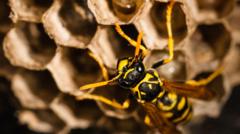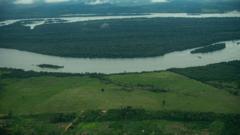Federal officials recently confirmed the discovery of a radioactive wasp nest near the Savannah River Site (SRS) in Aiken, South Carolina, where nuclear weapon components were once produced. The nest exhibited radiation levels ten times higher than permissible limits, prompting immediate action to eliminate the wasps and secure the nest as radiological waste. According to a report by the U.S. Department of Energy, while the nest was located close to storage tanks containing millions of gallons of liquid nuclear waste, the contamination was traced to "onsite legacy radioactive contamination," indicating residual radiation from the site’s past activities during the Cold War.
The Savannah River Site, which opened in the 1950s, has evolved its operations to focus on providing nuclear materials for energy generation, but it still grapples with the legacy of its prior functions. The Department of Energy investigation indicated no contamination was detected in the environment or any impact to the surrounding community, asserting that the wasps flying in proximity to the nest would have experienced considerably lower radiation levels.
Despite these reassurances, some environmental groups have expressed concern regarding the transparency of the situation. Tom Clements from Savannah River Site Watch emphasized the need for further investigation, highlighting public apprehensions about the origin of the radioactive material and potential leaks from the facility’s waste tanks. Historically, the site created an extensive amount of nuclear waste—over 165 million gallons—and while several tanks have been decommissioned, there remain ongoing operations and monitoring for safety.
Investigators maintain that the wasp nest poses no risk to public health or the environment, and while current operations focus on energy production, the legacy of contamination continues to garner scrutiny from various stakeholders. The community and watchdog groups await more clarity regarding the historical factors that led to the situation and the overall management of the site to ensure public safety.





















